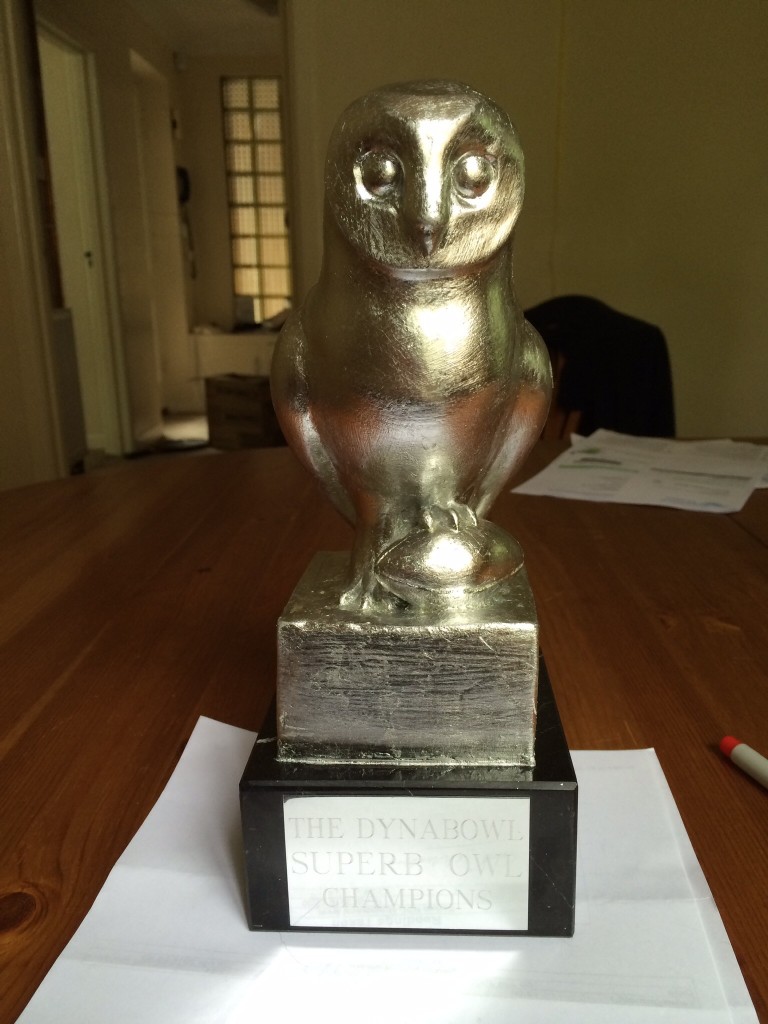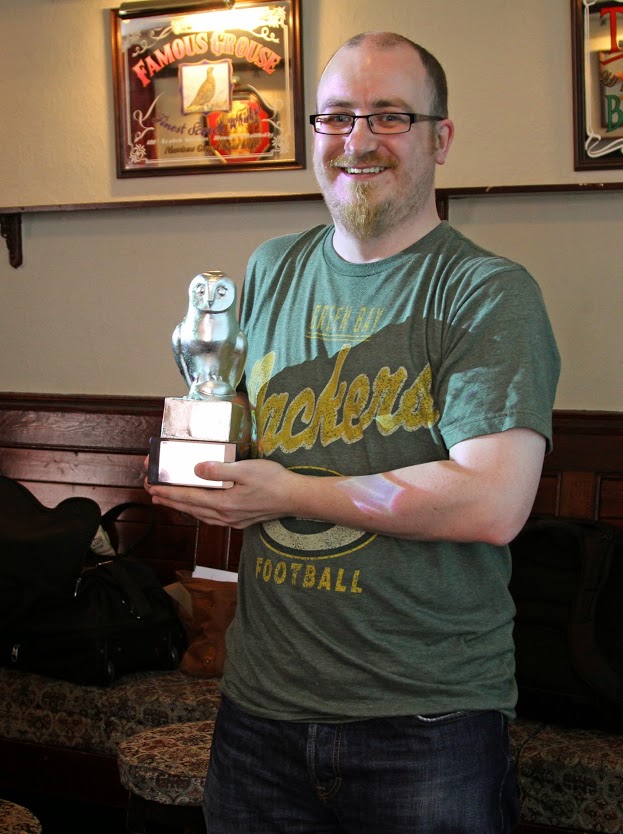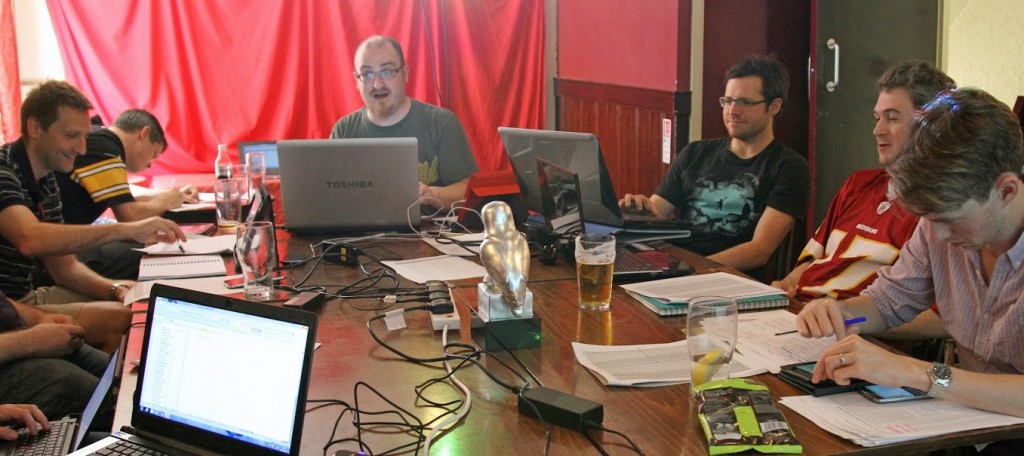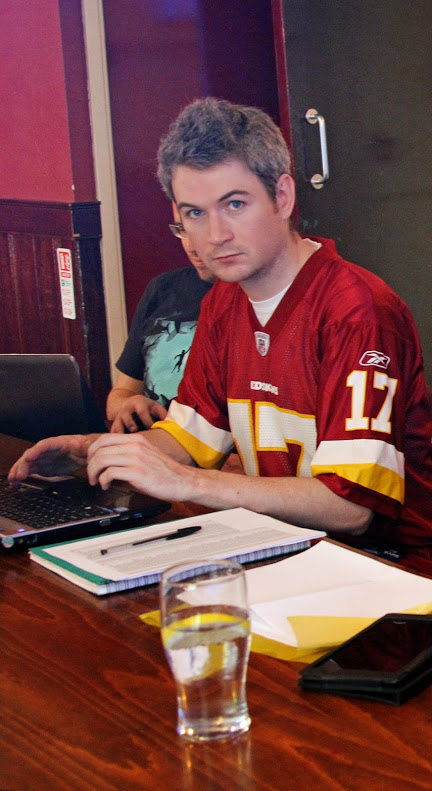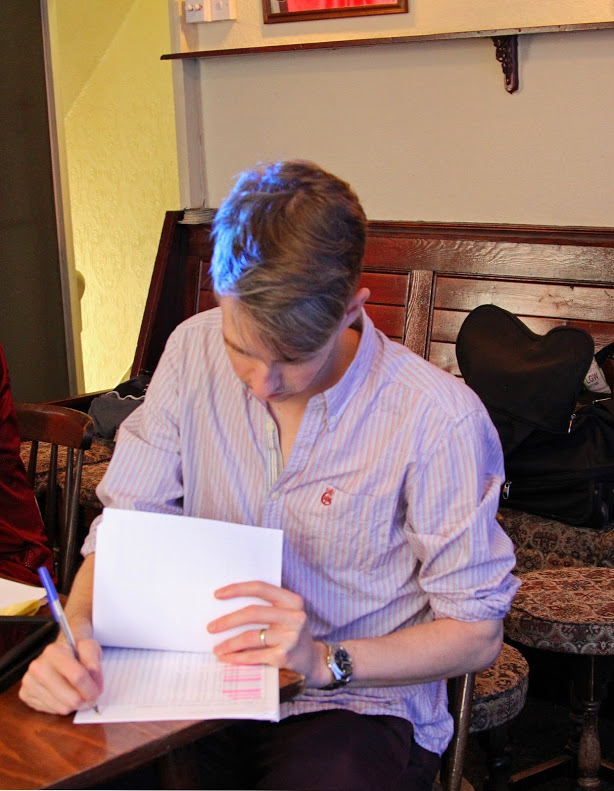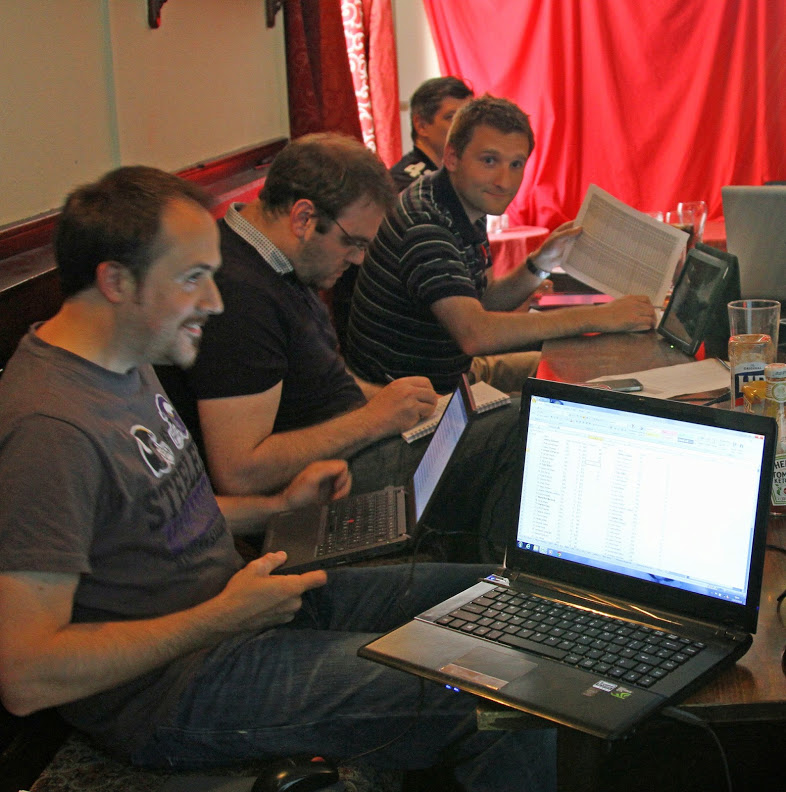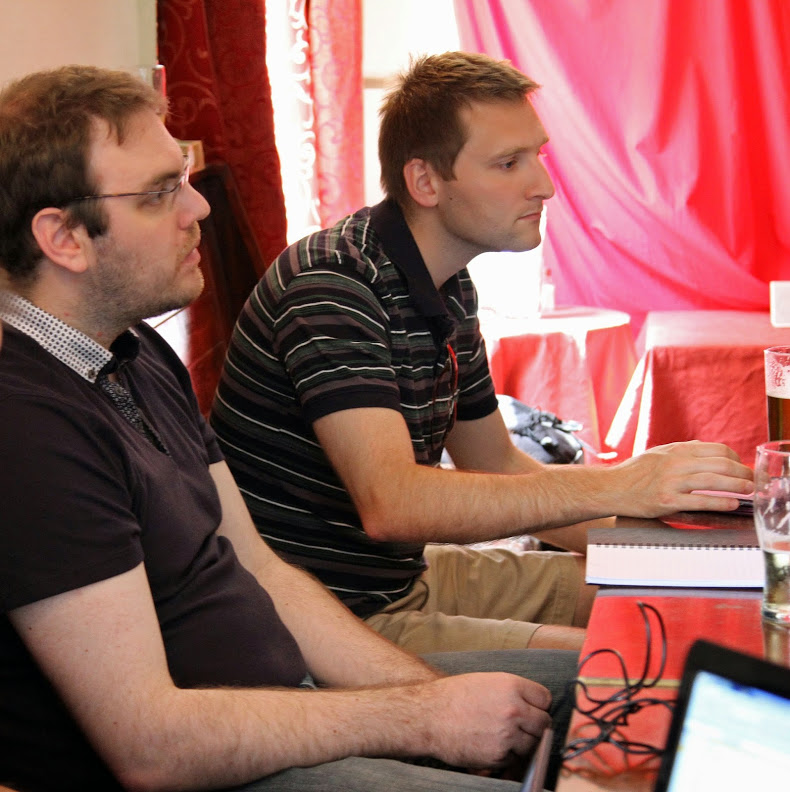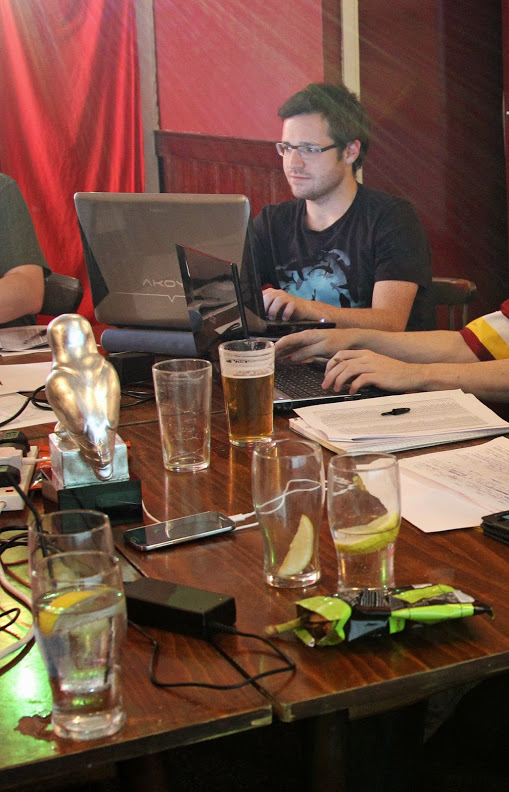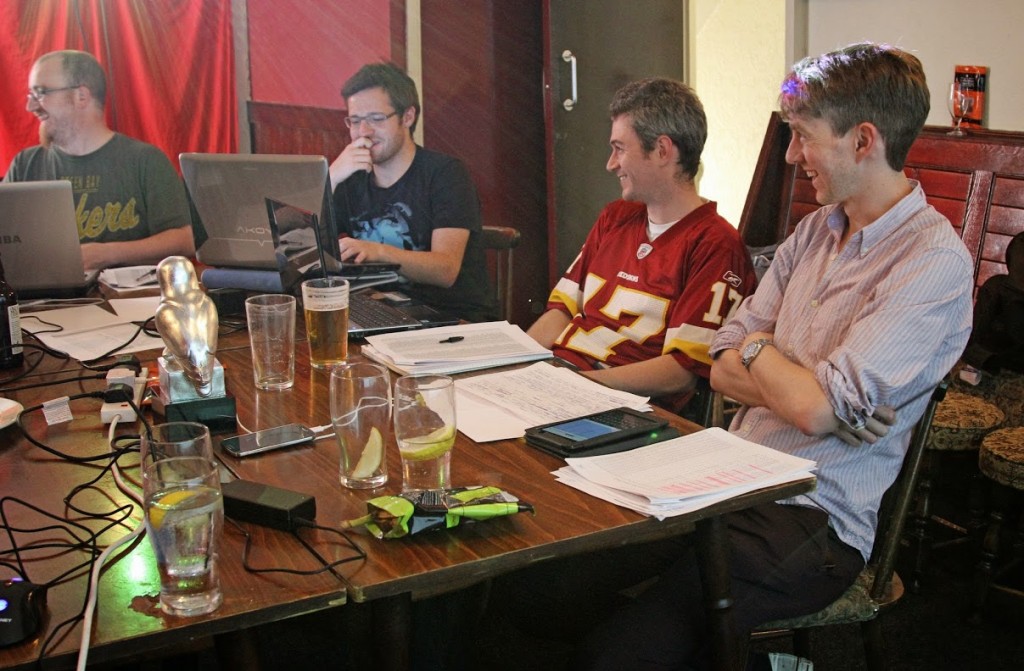So this is where the excitement comes – running backs. That’s true particularly this year, with a crop of varied and interesting talents. But before we deal with the individuals, let’s just quickly recap what I said in part one, about the draft value of Running Backs.
Running back is a deep position, and one that offers an immediate reward – all of the top ten rookies since 2007 at RB scored enough points in their first three years to crack the top ten over the last three years, in fact, all of the top 19 would have cracked the top 19 (and the 20th only misses out by a couple of points). However, draft position isn’t a great guide, with the top selected RB only making the top 10 once, and top three picks only accounting for 4 spots out of 10, with only two of the top ten were selected in round 1 (the top 2). And there’s a much bigger drop off between the best (800 points) and the 10th best (500) at the position that at either of the other two main offensive positions.
What that doesn’t cover is the longevity, the variable performances (Lacy for example, is one of the top ten rookies over the first three years, but at this point he’s pretty much a bum, who’s mainly drawing interest because he *might* do something again) and the meh-ness of a lot of the candidates who make the top ten in the bottom part of it, rather than at the elite level. Also, it does cover, but bears repeating, that the NFL draft position is not a particularly good guide to success, essentially making running back a profitable crapshoot. For anyone interested, here’s a list of rookie running backs over their first three seasons.
Anyway, on with the class – in less detail than the QBs, hopefully, as there’s a lot more of them..
Leonard Fournette (LSU) The consensus top RB in the draft, hardly a surprise as the guy is a serious slab of beef at 240 lbs in only a 6’0 frame. Unlike most big backs, he’s not slow though. In fact he’s downright fast, not just fast for a power guy. His 4.51 40 was only a couple of tenths slower than both Cook (210) and McCaffrey (202), with only Mixon and Freeman (both 233 and 4.45 / 4.46 respectively) showing a similar combination of speed and size. What they don’t have though is the same power level. This is not a runner you want to be waving an arm at, as he’s going to brush it off with disdain. I’ve picked the game against Auburn in 2015 as a decent showcase, though I was tempted to use the 2016 equivalent (I didn’t in the end, because I didn’t feel like it was fair to use a game from 2016, during which he battled ankle trouble all year). I feel like across these two you get a decent microcosm of the best and worst of him. One of the most startling and attractive elements is his speed, and the way he breaks arm tackles like he’s brushing off spider webs. And once he breaks loose of the bigger guys at the line, he will be a nightmare for most safeties or linebackers to try and bring down. However, in both tapes you see his tendency to try to break tackles with strength, rather than elusiveness. I mentioned above his 2016 season being hampered by ankle trouble, and I don’t see that injuries aren’t going to be a big concern for whoever ends up drafting him. Focusing on the 2016 game, though evident in the 2015 game also, there’s two other concerns that shine through. He’s not a patient runner, he runs in straight lines, at daylight and he doesn’t have great vision. He’s also an absolutely atrocious blocker in pass protection (and not too good in the passing game), and that might see him regularly off the field in scoring situations.
Auburn were one of the better defences (less so in 2015), and the SEC is not for the faint-hearted in general, but I would also be concerned about his performances against Alabama – in 2015 he had 19 carries for 31 and in 2016 17 for 35. A lot of that is due to the fact Alabama’s defensive front over-whelmed pretty much every offensive line, but it does throw up a warning flag for fantasy owners drafting Fournette. If he ends up in the wrong spot, behind a bad line, he could be a pretty spectacular bust – that lack of elusiveness, low patience and poor vision then become significant problems and likely see him regularly stopped behind the line. He’s consistently linked to Carolina, and while they invested fairly heavily in their line, they didn’t invest particularly well – both in terms of the quality of the players and not fixing problem spots. I’m not sure I’d be happy to spend a potential #1 pick on him if he ends up there. Better that he falls to someone like Philly in the middle of the first.
He’s drawn comparisons with AP, not because he likes beating children but because of that freak combination of power and speed, and that’s not unfair on that level. However, AP was a much more competent runner, with better vision and much more elusiveness and patience. Assuming he doesn’t land somewhere terrible think somewhere on a spectrum between Alfred Morris and AP, probably about 66% towards AP.
Dalvin Cook (FSU) Has taken a bit of a beating for his combine performance. His 40 was fine, if unspectacular, but his 3-cone drill and shuttle runs were outright terrible. He did however perform fine in the vert and was strong in the bench press. What does that tell us? That he’s not got a career as a dancer or a sprinter, but neither of those are the end of the world for a player who could be the first back off the board this weekend (unless he had his heart set on going on Dancing with the Stars). Cook’s a workhorse – not as freakish as Fournette, but he’s been more productive with a higher workload than him, and he’s a better weapon in the passing game, though not someone you’d call gifted in that area. Where with Fournette you can point to the peaks (vs Auburn in 2015) and the troughs (vs Alabama), there’s a steadiness to Cook – his “worst” games came in the middle of 2016 where he was carrying a prodigious workload (30+ touches a game) and was ‘only’ averaging between 5 and 6 yards a rush. This game against Miami from this year is from the midst of that run, but highlights why teams will be tempted to take him early – he just reliably churns out those 4-5 yard gains, hitting the hole, and when a crease opens up, he can go through it quickly enough (though he doesn’t have the explosiveness you see with Fournette, who finds another gear when that space appears). He does get lost in pass protection a little, but his reliability and versatility make him a three-down back.
His prodigious workload would be one of my concerns were I in an NFL front office. Just how much wear and tear has he picked up at FSU, particularly in relation to his two shoulder injuries could end up defining not just his draft position, but his longevity and impact. There are other red flags, and he’s not a player who’s avoided trouble, but the overall picture is of a guy who wants to play football, and does his best to avoid trouble. The stories about him from the Senior Bowl don’t ring true, and seem a lot like last year’s Laremy Tunsil drama – the work of a vindictive third party who’s perhaps playing a longer game of trying to scare other/future prospects into accepting his offer of help by showing what happens if they don’t. Ultimately, this stuff doesn’t help, but a lot of teams ‘don’t have player x on their draft board because of concerns’ when really they just mean ‘we have no chance of drafting him’ or ‘we have no need at this position’. And it really doesn’t matter what 31 other teams think, as long as one team likes you. As for comparisons and fantasy value… I think Fournette is more your lottery ticket, potential top three back, but Cook is the reliable every down back who’ll churn out top ten seasons, like Frank Gore or Jeremy Hill. Well worth the top three pick he’ll almost certainly command in the Dynabowl.
Christian McCaffrey (Stanford) is probably my favourite running back in the draft this year. He’s not as strong as Cook or Fournette, but he’s such a versatile weapon in both the passing and rushing games. I am genuinely excited to see what he can do in the NFL. Let’s start by dispelling some of the weird ideas people have got – he’s not a receiver. He’s a running back, and he’s more than capable of carrying the load, as his 2000 yard, 340 carry 2015 season showed. It’s lost among the many stats and records he broke on his way to breaking Barry Sanders NCAA all-purpose yardage record in 2015 as well as being the leader in that category again in 2016, that the majority of his work is still done on the ground. McCaffrey wowed at the combine in both the 3-cone and shuttle drills, and his quick feet and ability to make guys miss was fully on show in the PAC-12 title game against USC when he scored rushing, receiving and passing touchdowns on a day when he had over 450 all-purpose yards. His lack of physical strength was demonstrated by a fairly pathetic bench press performance, and teams might have some concern about him as a three-down back, but on the right team they could just split him out as a slot receiver on some of those plays and bring in a fullback to protect instead.
It’s unlikely he goes off the board before Fournette or Cook in either the NFL or a fantasy draft, but McCaffrey is the guy I’d most want in fantasy leagues, he’s just productive in all phases of the game, and always a threat to break a big play, and depending on where he lands (the Saints, the Giants) he could easily find himself catapulted to the top of fantasy draft boards. It’s a little obvious to make the comparison with Sproles or Bush, and it doesn’t quite fit as while he’s a much better runner, he’s not quite as dangerous in the open field. I think if you start thinking of Shady McCoy, but temper your expectations down from quite that height, you’re pretty close. I mentioned the Saints and Giants, but realistically it’s very hard to see him falling past Philly (and I wouldn’t rule out the Ravens either), but if he does, I can see the Broncos aggressively moving up for him. Suffice to say, where with Cook I made the point it only takes one team to fall in love, with McCaffrey it seems like many have, and it may be a question of who is willing to be the most aggressive to secure him.
Alvin Kamara (Tennessee) is the sign that we’re definitely into the second cut of receivers. Originally recruited by Alabama, injuries and better players saw him essentially redundant there, and he ended up at Tennessee after a year in junior college. Two years of consistent play and here we are. Just shy of 2,000 yards from scrimmage despite a relatively small number of touches, and a sizeable chunk of scoring plays. He’s a versatile weapon, but has little to separate him from the rest of the running back pack – he’s not strong like Fournette, agile like McCaffrey nor quick, like Foreman or Mixon. He’s just a solidly productive back in both the passing and the running game, and in the mid to late second round could end up being a relatively good pick for a productive offence looking for a versatile weapon (hello Green Bay). His fantasy value will very much be tied to where he lands, but assuming he doesn’t end up on an outright terrible team (SF, Cleveland) or stuck behind a better back as a useful piece of a committee (like New England’s), he’ll be a nice addition for whoever drafts him. I’d probably prefer to get him early in the second in the Dynabowl, but I doubt he’ll drop that far, even as the fifth or sixth RB off the board. This game against a very good Texas A&M defence (including presumptive #1 pick Myles Garrett) is easily the best of his college career, and highlights his low to the ground running style and ability to break off a big run. I made a point of talking down Mitch Trubisky for being a reliable and unspectacular QB option, but that’s because reliable and unspectacular QBs with no particular strengths or glaring weaknesses aren’t good for fantasy owners (nor are they particularly good for NFL teams). Running backs who are average at everything however are much more enticing, and unspectacular reliability is a solid foundation for a low RB1/high RB2 that you’d be very happy to get with a late first / early second pick. It’s possible that he’ll end up as a complementary piece to a main back, like Jeremy Hill in Cincy. At which point he becomes a very low value pick, considering his low upside against the cost of the pick.
D’Onta Foreman (Texas) led the NCAA with over 2000 yards in 2016, emerging from the depths of the Texas depth chart to have a spectacular season. He’s not an exciting prospect at the next level though, as there’s really not much to his game. He’s a bruising runner, with no real elusiveness or guile, and he’s no threat in the passing game. He’ll be a solid pick up in the mid-rounds of the NFL draft, but in fantasy he’ll probably end up over-drafted. He might emerge from a committee or because of injuries, but as he enters the draft he’s most likely seen as a committee piece, because he’s simply not going to see play in any passing situation (except as a blocker). Because he’s probably the fifth or sixth best back in the draft, I’d recommend steering clear unless he gets a very sweet landing spot in the NFL (Oakland, Washington would be good). Where he could excel is if he gets a job behind a good offensive line and emerges as a clear starter. At Texas he displayed good patience to follow his blocks, and despite what I said about his lack of elusiveness he’s still capable of cutting and following the flow of the play. While he lacks explosive acceleration, that’s not the same as him lacking speed, as he displayed with his quick 40 time. He needs a few steps to get going, but when he does he’s plenty quick enough, especially considering his 233lb frame. One thing he does have in his favour is nobody will doubt his durability, nor his ability to be a workhorse back, and the consistency of his performance in 2016 will probably catch the eye of some scouts. Anyway, here he is against Oklahoma State.
Right, that just leaves two main guys left, team mates Samaje Perine and Joe Mixon (Oklahoma). While there’s a lot of other backs left, and notable ones (Pumphrey, Gallman for example) there needs to be a line drawn somewhere and this feels like about the right spot – somewhere in the 4th round of the NFL draft.
So, starting with Samaje Perine – a three year starter on a perenially competitive Oklahoma team, Perine absolutely smashed the bench press at the combine and that’s ultimately what you need to know about him. Everything I just said about Foreman applies again here – he’s nowhere near the quickness of Foreman or Fournette though, he’s just a classic big, strong back. Like Brandon Jacobs, only not afraid of being tackled. Perine probably won’t do much at the next level, I don’t honestly see him cracking the top twenty rookies, but he could end up being one of those breakout guys – like Rob Kelley – who win your fantasy league for you if he ends up on a team with a shaky depth chart, or injuries bite hard. As for fantasy picks, he’ll get taken, but I wouldn’t bother unless he lands in a spot like SF or Cleveland where he’ll be a default starter, as otherwise he’s at best he’s a handcuff to your main guy.
And last of all… Joe Mixon so let’s start, as with everyone else, of a video of him in action. It’s near impossible to predict where he’ll land. I mean, he’s being only McCaffrey as an all-purpose threat in this draft and in college football last year, so it’s not a question of his on-field production, he’d potentially be in the mix with Cook, Fournette and McCaffrey at the top of this draft on footballing talent alone.
But this wasn’t the only incident involving him, with his suspension for an incident (abusive and violent – though not physically – towards a female parking attendant) this season, as well as his suspension for a year for the punch in the video. Ultimately teams may feel this is a ticking time-bomb and the negativity around him doesn’t warrant the pick. Let’s face it, the league hates controversy and nobody has yet signed Kaepernick when all he did was kneel down. Ray Rice and Ray McDonald haven’t played again, while Greg Hardy also finds himself on the black-list, though it took longer than it should have for him to get there. It’s really awkward, because talent tends to trump controversy in most cases (Tyreek Hill got drafted after all), but the video of the incident is on another level entirely, worse even than the Rice one. There is also a question about where the league will fall on this, whether Mixon will face the wrath of Goodell for something that happened long before he entered the league. Whether Goodell even has the authority to punish someone for that. Either way, it seems likely there’s a TMZ element to this that will turn a number of teams off completely, particularly those involved in abuse scandals before (49ers, Ravens, Panthers), but at some point, the risk will be outweighed by the reward. As with Carroo last year, he’s not a player I’d be drafting in fantasy, no matter how far he falls. He’s a cunt, and so are you if you draft him. Talent-wise though, he’s a top six pick, and that’s where he’ll go.
